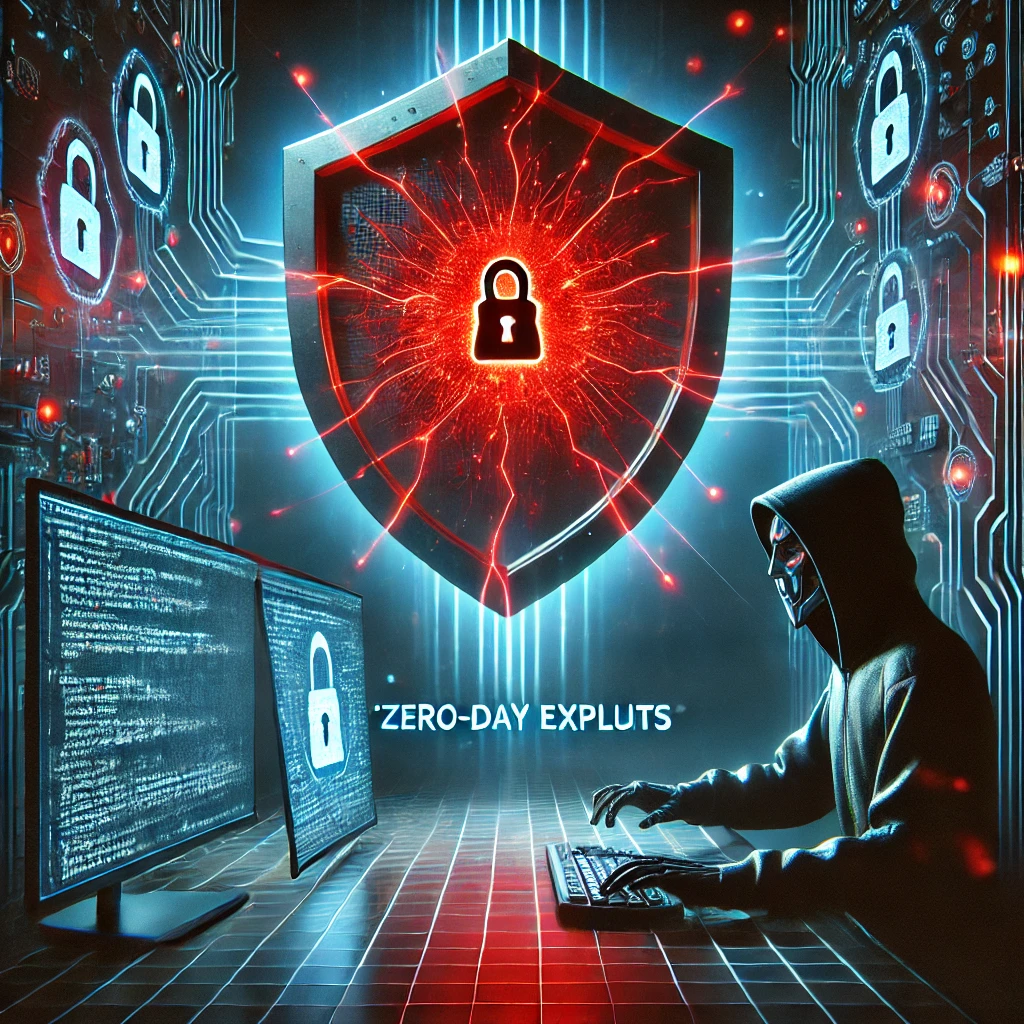Your cart is currently empty!

Top 5 Alarming Cyber Threats Businesses Must Prepare for This Year
In today’s hyper-connected world, businesses face an ever-growing array of cyber threats. The digital landscape has provided organizations with incredible opportunities for growth, but it has also opened doors to sophisticated cyberattacks. As technology evolves, so do the methods cybercriminals use to exploit vulnerabilities, making it crucial for businesses to stay informed and proactive. Cyberattacks…
In today’s hyper-connected world, businesses face an ever-growing array of cyber threats. The digital landscape has provided organizations with incredible opportunities for growth, but it has also opened doors to sophisticated cyberattacks. As technology evolves, so do the methods cybercriminals use to exploit vulnerabilities, making it crucial for businesses to stay informed and proactive.
Cyberattacks can have devastating consequences, including financial losses, reputational damage, and operational disruptions. A single breach can compromise sensitive customer data, intellectual property, and business continuity. To stay ahead, organizations must not only understand these threats but also implement robust defenses that address emerging risks. Below are the top five cyber threats businesses should prepare for this year, along with actionable tips to mitigate their risks.
Table of Contents
1. Ransomware-as-a-Service (RaaS)

Ransomware has become a highly organized and profitable criminal enterprise, thanks to the rise of Ransomware-as-a-Service (RaaS). RaaS allows even non-technical criminals to deploy sophisticated ransomware attacks by subscribing to kits developed by skilled hackers. These attacks often encrypt critical business data, demanding hefty payouts for decryption keys.
Real-Life Example: In 2021, the Colonial Pipeline attack demonstrated the devastating impact of ransomware. The attackers, using the DarkSide RaaS platform, disrupted fuel supply across the U.S. East Coast, leading to widespread panic and a $4.4 million ransom payment.
Why It’s a Threat:
- Lower barriers to entry for cybercriminals.
- Targeted attacks on industries with sensitive data, such as healthcare and finance.
- Increasing ransom demands, often in cryptocurrency.
How to Mitigate:
- Implement a strong backup strategy with offsite and offline backups.
- Train employees to recognize phishing attempts, a common delivery method for ransomware.
- Use advanced endpoint detection and response (EDR) solutions to identify and isolate ransomware infections early.
2. Phishing and Social Engineering Attacks

Phishing attacks remain one of the most effective ways for cybercriminals to compromise businesses. These attacks use deceptive emails, messages, or websites to trick employees into divulging sensitive information or downloading malicious software. Social engineering tactics have become increasingly sophisticated, often impersonating trusted entities or individuals.
Real-Life Example: The 2020 Twitter hack involved attackers using spear-phishing tactics to gain access to internal systems. This breach allowed them to take over high-profile accounts, including those of Elon Musk and Barack Obama, to promote a cryptocurrency scam.
Why It’s a Threat:
- Widespread use of email and messaging platforms creates numerous entry points.
- Attackers are leveraging AI to craft convincing phishing messages.
- Increased targeting of high-level executives (spear-phishing).
How to Mitigate:
- Implement email filtering solutions to block phishing emails.
- Conduct regular employee training on recognizing phishing attempts.
- Use multi-factor authentication (MFA) to secure access to critical systems.
- Encourage employees to report suspicious emails without fear of reprimand.
3. Zero-Day Exploits

A zero-day exploit takes advantage of unknown or unpatched vulnerabilities in software, leaving businesses vulnerable until a fix is developed and deployed. Cybercriminals actively seek out these vulnerabilities, often using them to gain unauthorized access to networks or data.
Real-Life Example: The 2021 Microsoft Exchange Server breach involved zero-day vulnerabilities that allowed attackers to compromise thousands of organizations worldwide, leading to data theft and unauthorized access.
Why It’s a Threat:
- By definition, zero-day exploits are difficult to detect and mitigate.
- They can be sold on the dark web for substantial sums, increasing their prevalence.
- Exploits often target widely used software or hardware, impacting numerous businesses simultaneously.
How to Mitigate:
- Regularly update and patch software to close known vulnerabilities.
- Invest in threat intelligence services to monitor for emerging zero-day exploits.
- Use intrusion detection and prevention systems (IDPS) to monitor abnormal network behavior.
- Employ application whitelisting to limit unauthorized software execution.
4. Supply Chain Attacks

In a supply chain attack, cybercriminals target less secure vendors or third-party suppliers to infiltrate a business. These attacks can lead to data breaches, ransomware infections, or even operational disruptions, as seen in high-profile incidents like the SolarWinds attack.
Real-Life Example: The SolarWinds attack in 2020 compromised the Orion software used by numerous organizations, including U.S. government agencies and Fortune 500 companies. This supply chain attack allowed attackers to gain access to sensitive networks.
Why It’s a Threat:
- Increasing reliance on third-party vendors and cloud services.
- Difficulty in ensuring the security of all external partners.
- Potential for widespread impact due to interconnected systems.
How to Mitigate:
- Conduct thorough security assessments of all third-party vendors.
- Require suppliers to adhere to strict cybersecurity standards.
- Limit third-party access to critical systems and data.
- Monitor supply chain activity for unusual behavior using advanced analytics.
5. Insider Threats

Insider threats involve employees, contractors, or business partners who misuse their access to company systems for malicious purposes. These threats can be intentional, such as theft of intellectual property, or unintentional, such as accidental data leaks.
Real-Life Example: In 2021, a Tesla employee was approached by a cybercriminal to install malware on Tesla’s internal systems. The employee reported the incident, preventing a potential insider threat.
Why It’s a Threat:
- Insiders often have legitimate access to sensitive data, making detection challenging.
- Growing hybrid work environments increase the risk of accidental data exposure.
- Disgruntled employees or those under financial stress are more susceptible to malicious behavior.
How to Mitigate:
- Implement strict access controls and the principle of least privilege (PoLP).
- Monitor user activity with behavioral analytics tools to detect anomalies.
- Foster a positive workplace culture to reduce the likelihood of malicious insider actions.
- Conduct regular security awareness training focused on data handling and reporting procedures.
Final Thoughts
Cyber threats are evolving rapidly, and businesses must remain vigilant to protect their data, operations, and reputation. By understanding and addressing these top threats — ransomware-as-a-service, phishing, zero-day exploits, supply chain attacks, and insider threats — organizations can build a robust defense strategy. Proactive measures, employee training, and advanced security technologies will be critical in staying one step ahead of cybercriminals this year.
FAQ
What is the most common cyber threat businesses face?
The most common cyber threat businesses face is phishing attacks, where cybercriminals trick employees into revealing sensitive information or downloading malware through deceptive emails or websites.
How can small businesses protect themselves from ransomware?
Small businesses can protect themselves by implementing regular backups, using advanced endpoint protection, educating employees on recognizing phishing attempts, and ensuring all software is up to date with security patches.
What is a zero-day exploit?
zero-day exploit targets vulnerabilities in software or hardware that are unknown to the vendor and remain unpatched. These exploits are particularly dangerous because they are difficult to detect.
Why are supply chain attacks so dangerous?
Supply chain attacks are dangerous because they exploit trusted third-party vendors or suppliers to infiltrate a business, potentially affecting multiple organizations within the supply chain.
How can businesses prevent insider threats?
Businesses can prevent insider threats by implementing strict access controls, monitoring user behavior for anomalies, fostering a positive workplace culture, and providing regular security training to employees.


